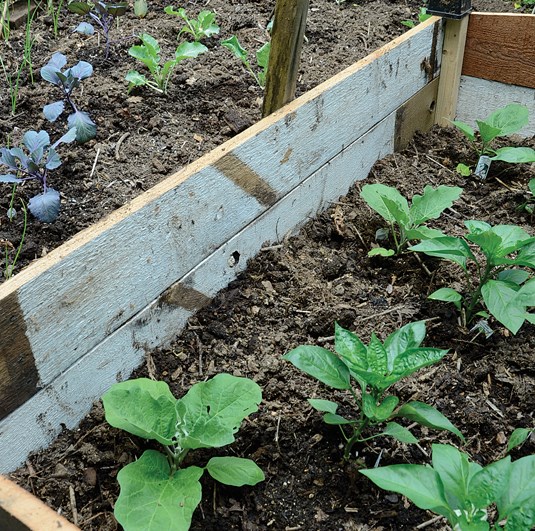Growing food at home, even on a small scale, is an important civic duty these days and an important learning curve for our children.
Every citizen should become informed on the ways of growing healthy food at home to better understand what we are paying for at the store or farm.
As a parent I am always trying to make healthy and affordable food choices for my children. I choose organic food where possible, and the "where possible" is a reality because organic food production still lags behind consumer demand. Production problems in organic food production are partially due to global lack of organic feed grains for livestock production and retail food products. The global grain supply is tightly controlled by a relatively few multinational corporations, loosely known as Big Ag. And Big Ag is heavily invested in the past 60 years of pesticide research and sales, as well as developing GMO products found in some of the grains we eat.
Organic food production has been the norm for thousands of years. There were few if any pesticides in ancient China or Egypt beyond natural substances. Humans began in earnest in the post-Second World War chemical boom of the 1950s to create poisons to aid in growing our food supply. Half a century later, the shine is off the pesticide bottle and there are mounting concerns over pesticide use in many countries in the world.
Organic food demand has been increased by research that has indicated unhealthy interactions between GMOs, pesticides, our food supply and the health of our children.
Over the past 20 years, organic food sales have annually increased, on average, 15 to 20 per cent, with demand outpacing supply. In 2006, organic food sales in Canada were $1 billion. By 2010, organic food sales had increased to $2.6 billion. The global market for organic food is estimated at $56 billion, according to Agriculture and Agri-Food Canada. Total global food retail sales are around $4 trillion per year, says the United States Department of Agriculture.
Regardless of space constraints, lifestyle, monetary or other reasons, it is important for our children to understand how food is grown. Growing food at home is simply good parenting and educational for everyone involved.
To get you started on growing your own food at home, here are some basics and a few food plant suggestions to try.
Where should I grow my food?
For those who have earth to garden upon, choose a space with the brightest sun possible. It's hard to grow food under the shade of trees.
The space must also be in a place where the food plant will not drink up any soil contaminates. Anywhere that is affected by leaking or leaching of any chemical pollutants should not be used for food production. For example, in the early days of the food movement people were growing food on any vacant city lot or boulevard they could find without understanding the soil history of those sites or the potential for future pollution contamination. In high traffic areas, food grown on city boulevards is susceptible to automotive pollution. And vacant building lots are usually contaminated with garbage and demolition debris. You are what you eat, so choose a clean place to grow food. If you have no available earth, grow food plants in big pots on decks or indoors on windowsills.
Feed the soil, not the plants.
Growing delicious, healthy food starts by providing healthy soil. Any soil can be improved by amending with manure, compost and topsoil. No matter if you are planting just one plant or a whole garden, dig deep and wide to allow room for soil amendment. Add 10 to 13 centimetres of manure or compost on top of the planting space, and mix the amendment into the existing soil.
Do not add bone meal or starter fertilizer. New plantings do not have a developed root system capable of taking up those additives, so don't waste your money.
You can fertilize later if needed.
Plant your food plants and then cover the planting bed with organic mulch, like composted bark mulch, wood chips, leaves or whatever you have. Mulch is a form of fertilizer that slowly feeds the soil and plants.
Never use landscape cloth or plastic to cover garden beds.
Which food plant should I grow?
If you are a beginner, try blueberries, they're easy to grow, don't take much space and they are tasty.
If you have limited space, grow in pots and try lettuce or strawberries, or easy herbs like rosemary, chives and parsley.
For the experimentalists, try Buffaloberry (Shepherdia argentea), which produces berries rich in carotenoid and phenolic antioxidants.
Start small with one or two plants and grow your plants and your confidence.
You will be rewarded with healthy, fresh and delicious home grown food.
Todd Major is a journeyman horticulturist, garden designer and builder, teacher and organic advocate. stmajor@shaw.ca



